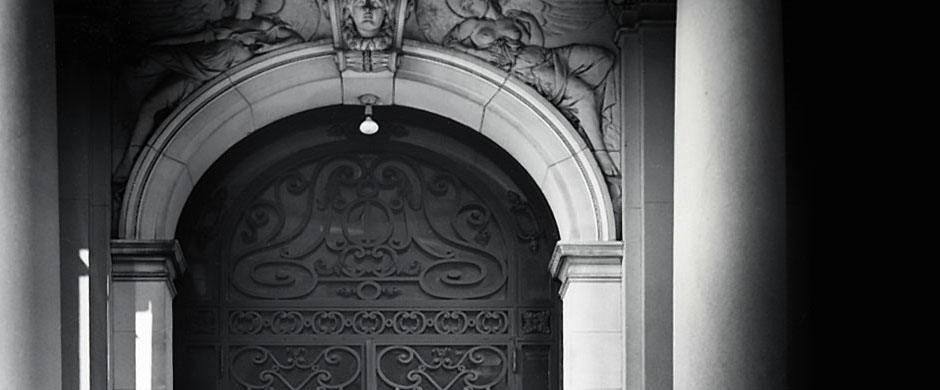 | Art History
| Art HistoryConservation
Archaeology

In Memoriam | Jean-Louis Cohen
Written Tributes
As for so many of us on both sides of the Atlantic Ocean, I owe Jean-Louis more than to any other mentor or colleague. Our professional and friendly encounters over four decades rush back to memory: the Americanism and Modernity conference and publication, guidance for my dissertation; the Duke house symposium and book; a recent dinner at my house where he marveled at Greenbelt’s pedestrian pathways ; his insights on the Beaux-Arts phenomenon following the SAH session I chaired last April in Montreal. Nothing could be more gratifying than his interest and approval. His unmatched productivity and power of historical synthesis raised the bar of scholarship in architectural and urban history the world over.
Gratefully
Isabelle Gournay (Emerita, University of Maryland)
Among his many talents, Prof. Cohen was a superior architectural photographer. He used his cameras, both film and digital, as an extra set of eyes, making thousands upon thousands of images of every facet of the buildings on which he was working. His pictures are creative, insightful, a way of visualizing his thoughts—and he gladly shared them with the community, first as slides and then as digital records. He knew the power that images have, and their place in research and scholarship. The Institute’s image collections are far richer for his contributions. Prof. Cohen treated scholarship as a grand community effort. He treated the staff with respect and good humor, and made us feel included in that effort. He was that rare scholar who is both accessible and brilliant, who brought out the best in all of us. He is, and will be, greatly missed.
Jenni Rodda
Jean-Louis Cohen was exacting in every moment. My last evening with him was in Amsterdam when we somehow got tickets to the Vermeer show, last entrance, and were in the end alone in the galleries to circulate. I have photographs of him leaning into each painting then walking slowly, hands behind his back, forehead parting the way to the next room. Others have written eloquently of his extraordinary and relentless productivity, broad and deep. We worked on a few topics together, but mostly we talked. He had a special place for engineering which he said came from his early days in Jean Prouvé’s class at, I believe, the Conservatoire des Arts et Métiers. Together with my brother in structures, Marc Mimram, we always felt understood and supported in our work, teaching, and writings. We had many projects ahead of us. We forget too easily how close to us death always is. His passing came as a bolt, shattering.
Walking the other day through the Manet/Degas show at the Met, I was reminded as have been many of a time of camaraderie perhaps less scattered by trade and inattention. I would have loved to walk through the show with him, a short way from his elegant haunt in NYU’s Duke House on 78th Street. In memory, we can share a few lines from Stéphane Mallarmé’s “Salut” standing by Édouard Manet’s 1876 portrait of the poet:
Rien, cette écume, vierge vers
À ne désigner que la coupe;
Telle loin se noie une troupe
De sirènes mainte à l’envers.
Nous naviguons, ô mes divers
Amis, moi déjà sur la poupe
Vous l’avant fastueux qui coupe
Le flot de foudres et d’hivers;
Guy Nordenson, SE, FASCE, AAA&S, NAE
Guy Nordenson and Associates
Structural Engineers LLP
Jean-Louis Cohen was both wonderfully urbane and refreshingly cheeky. He could be wickedly funny with a penchant for hilarious and enviable bons mots. Endowed with suave diplomatic skills, he was also extremely outspoken in his beliefs, even when he had a clear-sighted view of possible consequences. Politics played a central role in his research which was rooted in a strong sense of social justice. Exploring the many ways in which these affected architecture, Jean-Louis underscored the discipline’s tenacious links to power, to colonialism, and its equally strong relation to social class, all of which are reflected in architectural history as well.
With Jean-Louis’s deep knowledge of history and his unwavering moral compass, this well-read and well-traveled citizen of the world was all too aware of the fragility of democracy. I miss his voice, his courage, and his legendary generosity. In fact, thinking back on Jean-Louis at this particular moment, I am reminded of a moving exchange between two Austrian writers whose work he knew: Joseph Roth and Stefan Zweig. It was a critical time: 1935, two years after Hitler became Chancelor, when both men were already in exile, Roth in Paris and Zweig in London. But though they had left and lost their country, Roth assures Zweig that henceforth “friendship is the only true Heimat.” Like many people gathered in this room and in cities around the world, I, too, found shelter and warm hospitality in that great, capacious homeland that was the friendship of Jean-Louis Cohen.
Esther da Costa Meyer
Professor emerita, Department of Art and Archaeology
Princeton University
Contact the Institute
Building Hours
Contact Information
If you wish to receive information on our upcoming events, please subscribe to our mailing list.



